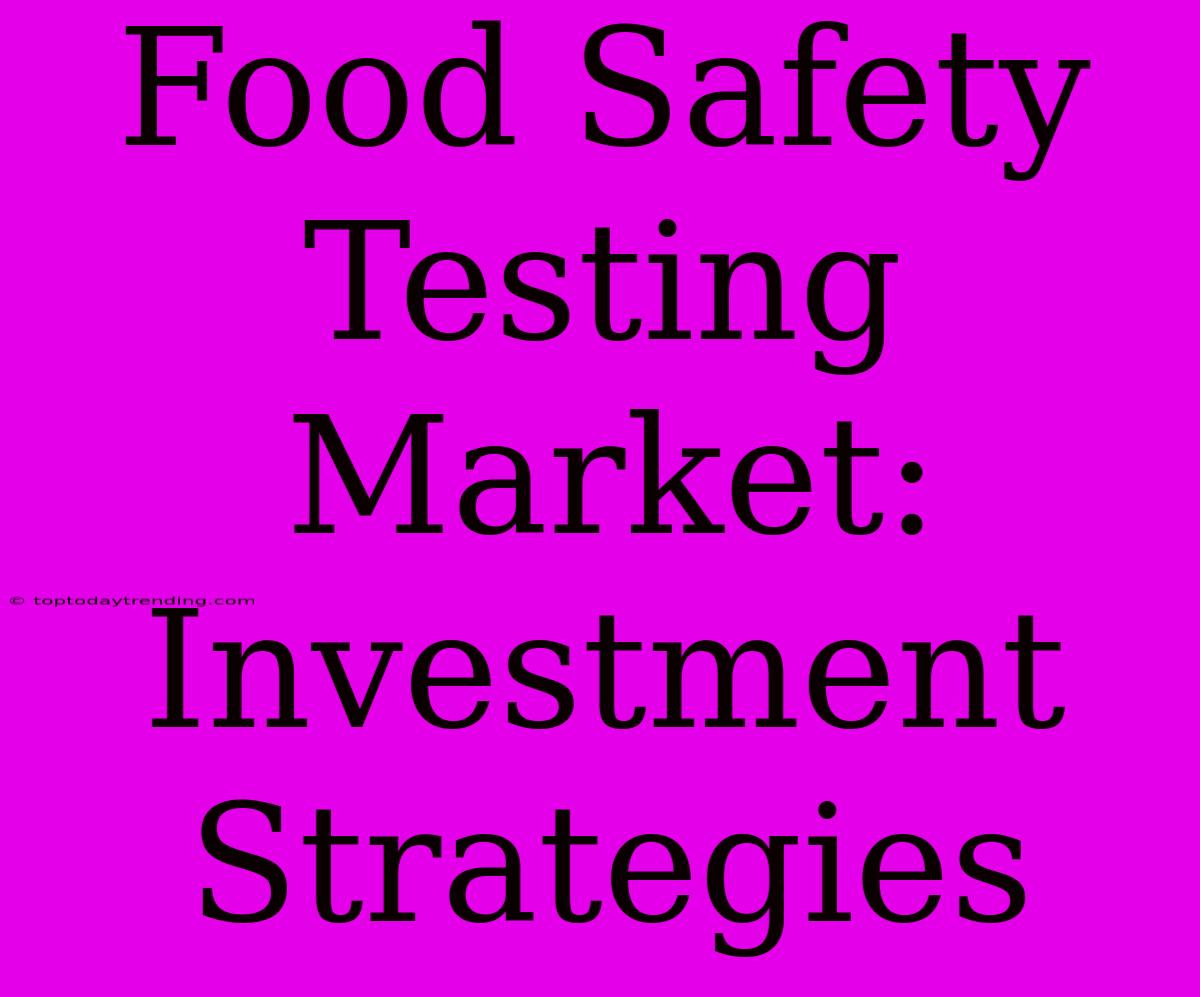Food Safety Testing Market: Investment Strategies
The food safety testing market is experiencing rapid growth, driven by increasing consumer awareness of foodborne illnesses, stringent government regulations, and the rising demand for safe and high-quality food products. This trend presents significant investment opportunities for businesses looking to capitalize on this lucrative market.
Market Overview and Growth Drivers
The global food safety testing market is projected to reach $24.3 billion by 2028, growing at a CAGR of 7.2% during the forecast period. This growth is attributed to several key factors:
- Increased awareness of foodborne illnesses: Public health concerns surrounding food safety have led to increased consumer demand for safe and traceable food products.
- Stringent government regulations: Governments worldwide are implementing stricter regulations to ensure food safety, leading to increased testing requirements for food producers.
- Globalization and international trade: The increasing globalization of food trade necessitates comprehensive food safety testing to ensure compliance with various international standards.
- Technological advancements: New technologies such as rapid diagnostic testing, DNA sequencing, and advanced analytical techniques are improving the efficiency and accuracy of food safety testing.
- Growing demand for organic and natural foods: The rising consumer preference for organic and natural food products has led to increased demand for testing to verify product authenticity and safety.
Investment Strategies for the Food Safety Testing Market
Investors looking to enter the food safety testing market can consider various investment strategies:
1. Investing in Existing Players:
- Publicly listed companies: Investing in publicly traded food safety testing companies provides access to a mature and established market.
- Private equity and venture capital: Investing in private companies with innovative technologies or a strong market position can offer high growth potential.
- Strategic partnerships: Collaborating with existing players in the food industry can provide market access and resources.
2. Investing in Emerging Technologies:
- Next-generation sequencing (NGS): NGS technology allows for rapid and accurate identification of foodborne pathogens.
- Rapid diagnostic tests: Point-of-care testing devices are becoming increasingly popular for their convenience and speed.
- Biosensors: Biosensors are being developed for real-time detection of food contaminants and pathogens.
- Artificial intelligence (AI): AI-powered tools can improve data analysis, risk assessment, and prediction of food safety hazards.
3. Investing in Specialized Testing Services:
- Allergen testing: Testing for the presence of common food allergens is increasingly important due to growing allergies.
- GMO testing: Testing for genetically modified organisms (GMOs) is crucial for ensuring label accuracy and consumer compliance.
- Residue analysis: Testing for pesticide residues and other contaminants is essential for ensuring food safety and quality.
- Microbial testing: Identifying and quantifying microbial contaminants in food products is crucial for preventing foodborne illnesses.
4. Investing in Emerging Markets:
- Developing economies: Growing middle classes in developing countries are driving demand for safe and affordable food products.
- Emerging markets: New markets like Southeast Asia and Africa offer potential for growth in the food safety testing market.
Key Considerations for Investors:
- Regulatory landscape: Understanding the constantly evolving regulatory environment is crucial for successful investment.
- Technological advancements: Keeping abreast of new technologies and their impact on the food safety testing market is essential.
- Market competition: Assessing the competitive landscape and identifying market niches is critical for investment success.
- Customer needs: Understanding the evolving needs and preferences of consumers and food producers is crucial for developing effective investment strategies.
Conclusion:
The food safety testing market presents significant investment opportunities for businesses willing to capitalize on the growing demand for safe and traceable food products. By investing in existing players, emerging technologies, specialized testing services, and emerging markets, investors can secure a foothold in this thriving industry and contribute to ensuring global food safety.

